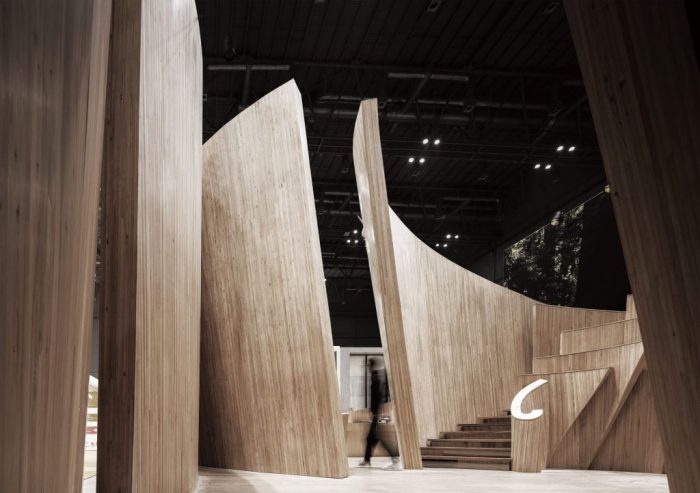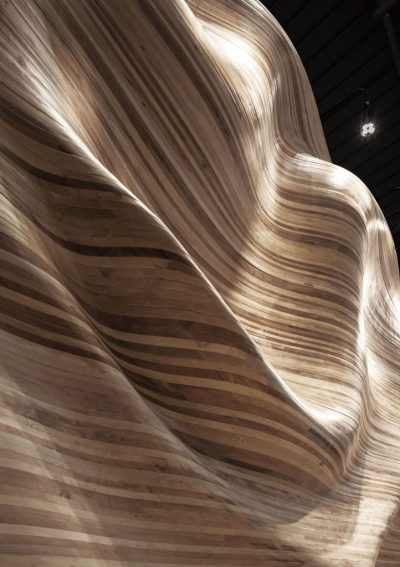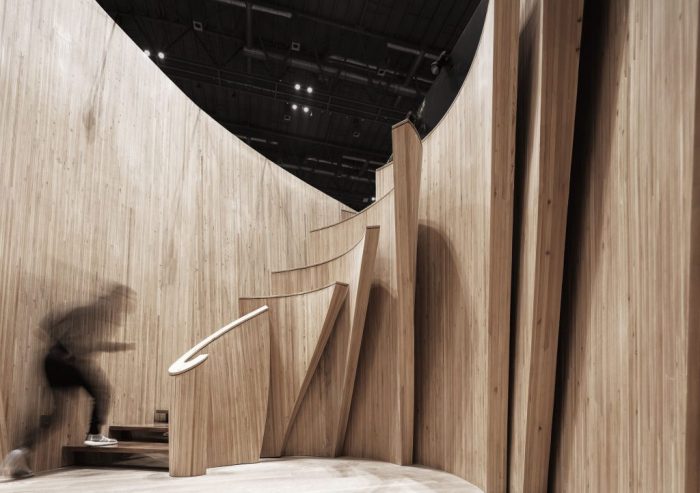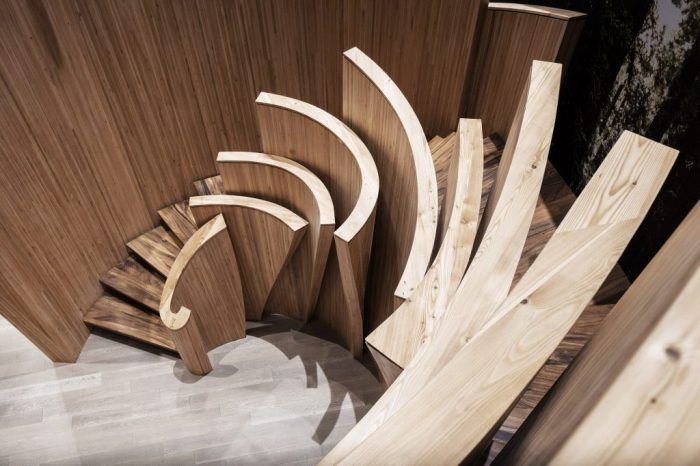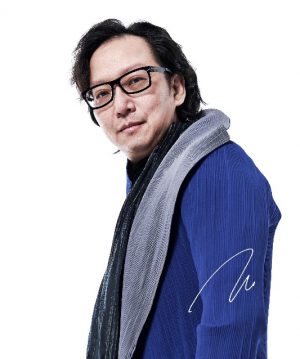Home > Case Studies > Beautiful Breath of Life: Wood products through the eyes of top Chinese designer Du Bojun
BEAUTIFUL BREATH OF LIFE: WOOD PRODUCTS THROUGH THE EYES OF TOP CHINESE DESIGNER DU BOJUN
Although this year’s Tokyo Olympics were inevitably postponed, the Olympic venues with the theme of “Tree of Life” have become a unique place in the history of architecture. These masterpieces combine the ultimate craftsmanship of the human spirit in harmony with nature. The environmental aspect of trees and wood also attracts many industry experts to study and appreciate the designs. Du Bojun, the well-known Chinese designer, is one of them. These “Tree of Life” designs also align perfectly with his own personal design philosophy,
For 30 years Du Bojun has adhered to the concept of integrating his life philosophy into his designs. His works reveal a rich human spirit. He won the Chinese Designer of the Year in 2019 and several international awards in 2020, including the prestigious German Red Dot Design Award and the American Muse Design Award. He has also been invited as a lecturer at Tsinghua University, Shanghai University of Finance and Economics and other well-known institutions. He is a guest judge at various design competitions and a guest speaker at professional forums. Du Bojun was also named one of the most popular Chinese designers on the Hurun Report.
Bringing the Wood from the Furnace into the Exhibition Hall
Whether talking about his works or industries, Du Bojun’s entry point is always simple and down-to-earth, forming a unique contrast with the atmosphere where his works are usually presented.
Du Bojun uses American red oak and white oak to create stunning all-wood showrooms. The malleability of wood was fully demonstrated at last year’s China Furniture Expo.
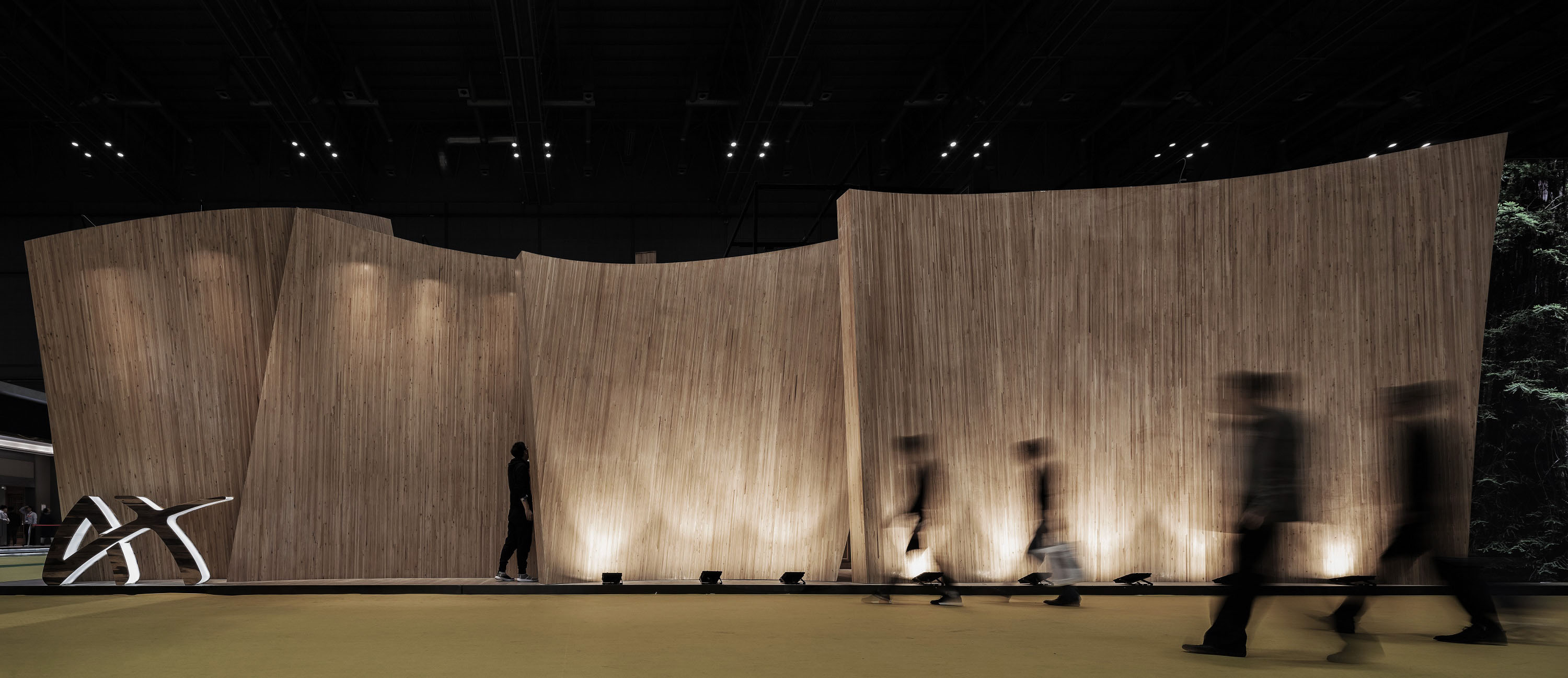
Recalling his creative inspiration at the time, he describes himself as seeing the delicate wood flower floating in the air and dancing in the sunlight. The shape of the wood flower inspired Du Bojun to realize that the curl of wood chips can present a lighter, softer texture, a departure from our usual impression of the heaviness of wood.
Speaking about what kind of wood was chosen for his idea, Du said: “Instead of cutting new wood, this project is made from scraps of American red oak and white oak.” He was amazed by the variety of wood he saw in the wood processing factory. He also saw the leftover scrap materials being put into the furnace as processing fuel, including some of the precious leftover scraps of wood. This scene distressed Du Bojun so much that he decided to rescue them from the furnace and have them sent to the exhibition hall.
Du Bojun’s preference for using wood has not changed. He feels that people have a natural affinity and preference for wood. The properties of wood offer warmth, while the natural texture is comforting. This makes wooden homes have its own healing effect.
Wood Products are a Beautiful Breath of Life
Wood may be the oldest home furnishing material, but it has fallen out of favor in the past, especially during the development of industrial technology. In recent years, with the increasing call for natural products and environmental protection, wood has returned to the mainstream of furniture industry. In this regard, Du Bojun has provided further details – Processing Standard.
“Wood is a living, breathing material, which is its natural advantage but it also creates challenges as a processed product. A solid wood product will continue to grow into different forms based on different regions due to the local climate and environment,” he explained. “There is no doubt that Chinese carpenters are very skilled, so solid wood furniture can be passed down from generation to generation, just like antique solid wood furniture. However, we have not formed a new standardization of processing technology in a long time. China covers a vast area with different climates and environments. The processed wood will reveal the characteristics of localization and have significant differences from other standardized and quantified materials.” Now that the industry has become aware of this situation, they have incorporated regional characteristics into the standards of processing technology, thereby accelerating the development of wooden furniture.
In addition, advocates of wood products often face questions about environmental protection, so the industry has been educating the public and promoting the sustainability of reclaimed forests. Let’s take American hardwood as an example. Forest resources in the United States are abundant, and the hardwood forest land in the United States is managed in accordance with the sustainable forest certification management method. One of the advantages is the artificial selective logging of trees. Because there is an abundance of trees in the forest, a very large canopy is formed, which blocks out sunlight to the smaller trees. The smaller trees cannot grow without sufficient sunlight. So one method of long-term sustainability is to cut down some adult trees and remove their crowns so that healthy, strong young trees can slowly grow into towering trees. This is an example of forest management that is sustainable.
For environmental protection, Du Bojun also shares a fresh idea: reuse. “The wood we use every day is a sustainable resource. If it can be reused, the environmental effect is even better. Plus, as a living material, wood will never become outdated. Excellent works not only withstand long-term use, but can also be passed down to future generations. Wood is not only environmental, but also has a humanistic feel,” he said.
In recent years, Du Bojun has mainly favored American cherry, walnut, red oak and white oak. In addition to the excellent quality of these species, Du Bojun admits that he prefers to choose materials with stable prices rather than materials that are subject to speculation and severe price fluctuations. His new works are currently in production and expected to be available next year.
Du Bojun’s Work at 2019 China Furniture Expo
Material: American red oak and white oak
